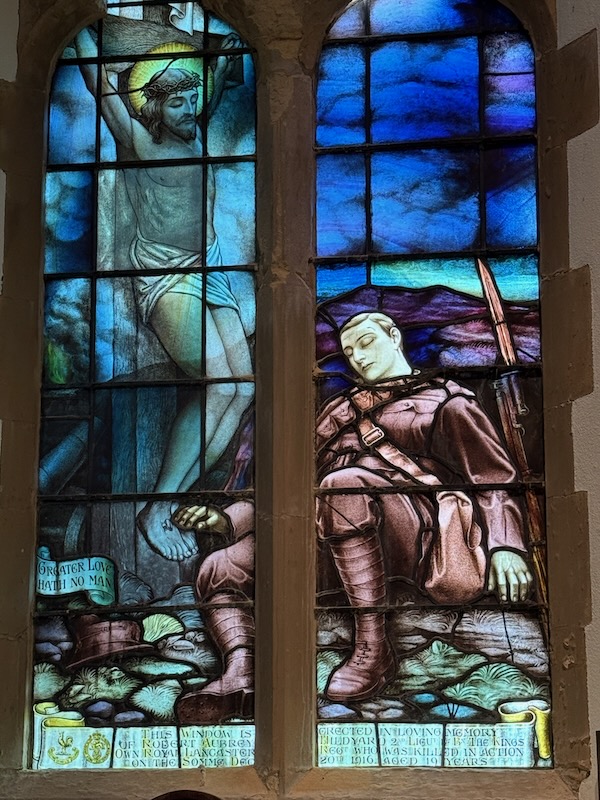Our Blog - August 2025 - England trip - Hythe
The earliest reference to the town of Hythe is in the Domesday Book of 1086 although there is evidence that there were some Romans here. This was one of the original "Cinque Ports" (along with Hastings, New Romney, Dover, and Sandwich) and had a bustling harbor. However, it disappeared due to silting. In 1348, the Black Death afflicted Hythe, and in 1400 the plague further reduced the population. The town has medieval and Georgian buildings, as well as a Saxon/Norman church on the hill and a Victorian seafront promenade. Hythe was once defended by two castles, Saltwood and Lympne. Hythe Town Hall, a neoclassical style building, was completed in 1794. Hythe's market once took place in Market Square (now Red Lion Square) close to where there is now a farmers' market every second and fourth Saturday of the month. Hythe has gardening, horse riding, bowling, tennis, cricket, football, squash and sailing clubs. Lord Deedes was once patron of Hythe Civic Society.
As we walked down one of the main streets, we saw these mosaic benches and Lucy decided to try to replicate the corgi on the bench.

The White Hart Inn is where Mr Francis Pettit Smith (who invented the 'Screw Propeller' for ships) planned the defense of Britain with the Duke of Wellington. Nearby is the Town Hall, that was completed in 1794. The town market used to be on the ground floor and there is an oak panel in the Council Chamber that has the names of Bailiffs from 1349 and Mayors from 1575. The clock was added in 1871.
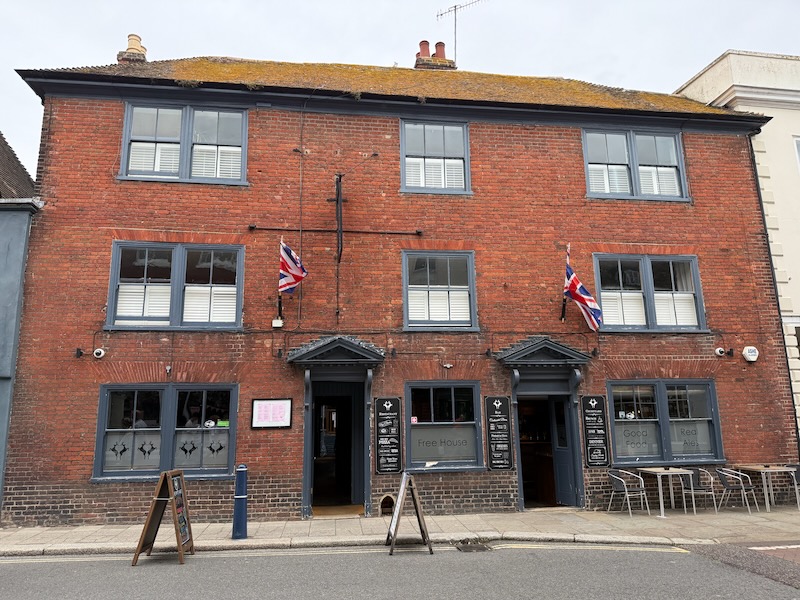

The Kings Head is the oldest pub in Hythe, opened on High Street in 1583.
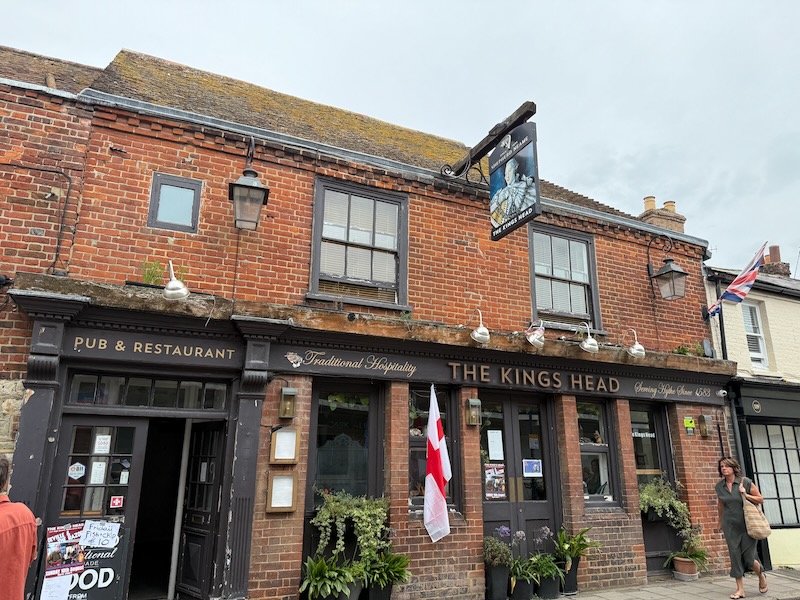
This old stone building is now a retirement home, but it used to a medieval hospital founded in 1274 (according to the blue plaque). The present building is 16th century, restored and altered in 1802.

St Leonard's Church dates back to the 11th century and is built up on a hill. The tower on the western end was destroyed by an earthquake tremor in 1739 and restored in 1750.
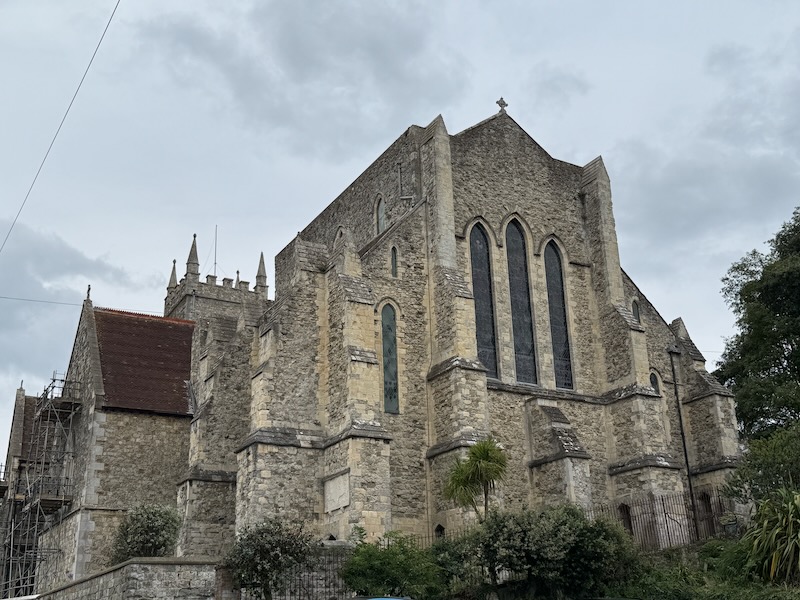
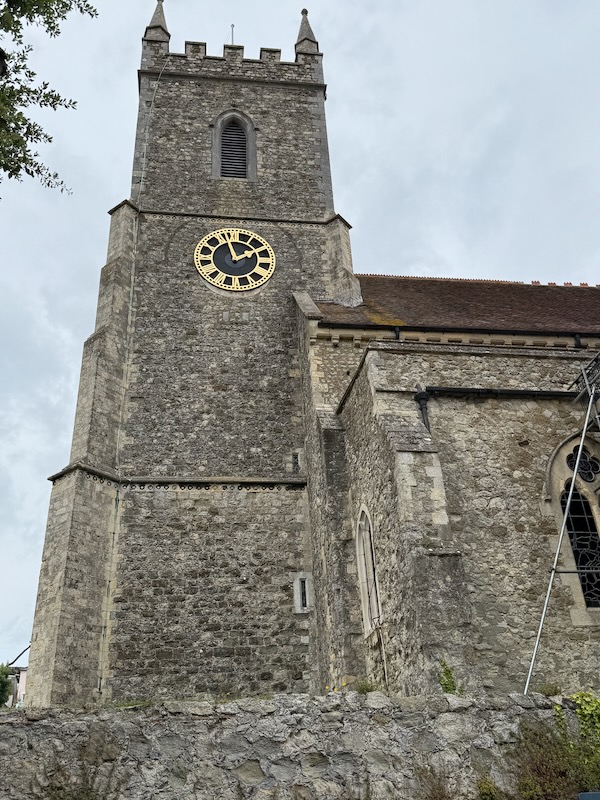
This is another church where the nave is separated into a larger section and a smaller Sanctuary. The pews in the main nave are "horizontal" and face the high altar in the Sanctuary, and those in the Sanctuary are "vertical", facing each other and would be where the choir would sit.

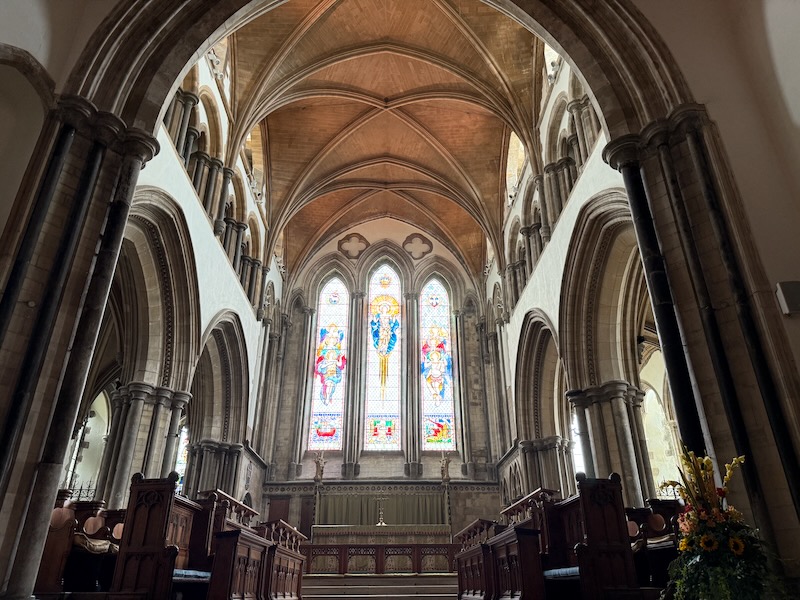
Here is a close-up of the 3 windows in the Sanctuary, as well as other miscellaneous windows.
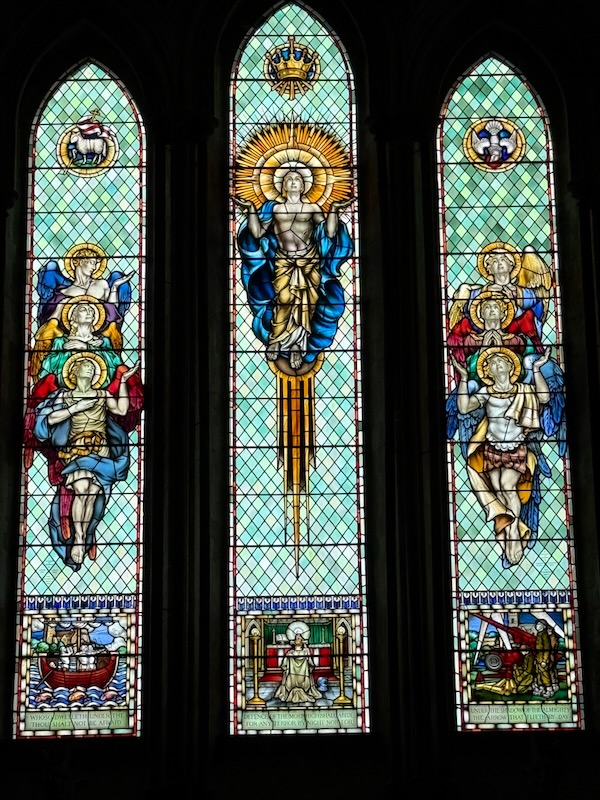
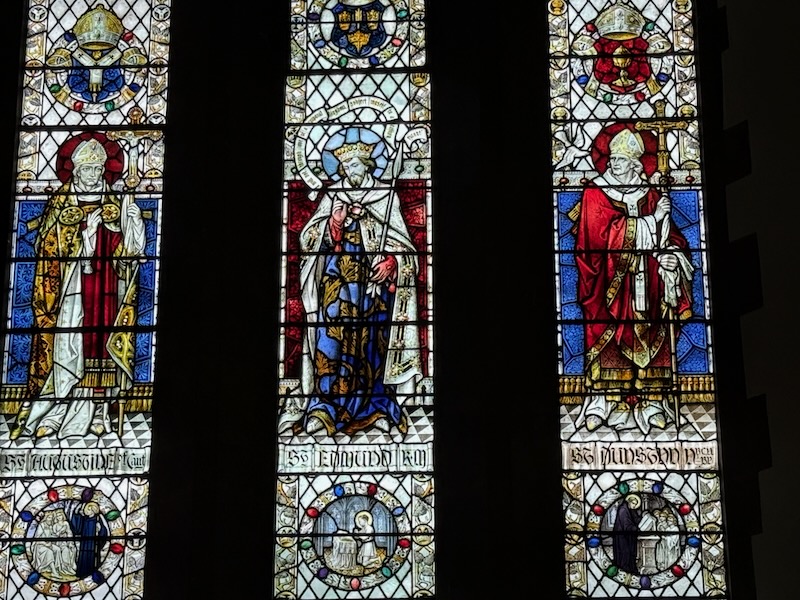
I thought this window was especially interesting ... The information at the bottom says This window is erected in loving memory of Robert Aubrey Hildyard 2nd Lieut., 1st Bn The King's Oown Royal Lancaster Regiment, who was killed in action on the Somme, Dec 20th, 1916. Aged 19 years.
